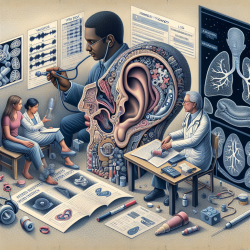Understanding the Hidden Risks in Tuberculosis Treatment
Recent research conducted at a drug-resistant tuberculosis treatment center has unveiled critical insights into the audiometric assessments of patients undergoing aminoglycoside therapy. This study, titled Early hearing threshold changes and peculiarities of audiometric assessments among patients in a drug-resistant tuberculosis treatment center, highlights the importance of early audiometric assessments to detect potential ototoxicity, a side effect that can lead to irreversible hearing loss.
Key Findings from the Study
The study involved 53 patients, aged 13 to 91, who were undergoing treatment for drug-resistant tuberculosis. The research found significant changes in both air and bone conduction hearing thresholds within the first two weeks of therapy. Specifically, 7.5% of the patients developed ototoxicity, indicating that audiometric assessments conducted after therapy commencement do not accurately represent baseline audiometry.
- Significant worsening of hearing thresholds between baseline and one week into therapy (p=0.011 for air conduction).
- Further deterioration between baseline and two weeks into therapy (p=0.003 for air conduction).
- Minimal changes between the first and second week of therapy.
Implications for Practitioners
For practitioners, these findings underscore the necessity of conducting pre-therapy audiometric assessments to establish a true baseline. This is crucial for accurately detecting ototoxicity, which can occur as early as two weeks into treatment. Practitioners should be aware of the following:
- Conduct baseline audiometry before starting aminoglycoside therapy.
- Monitor patients' hearing levels regularly, ideally once or twice a week during treatment.
- Consider genetic predispositions that may increase susceptibility to ototoxicity.
Challenges and Recommendations
The study also highlighted challenges faced in resource-limited settings, such as the lack of calibrated audiometric equipment and trained personnel. To improve outcomes, it is recommended that treatment centers:
- Invest in proper audiometric equipment, including those capable of measuring ultra-high frequencies.
- Provide training for healthcare providers on the importance of audiometric assessments.
- Implement genetic screening for patients at higher risk of ototoxicity.
Conclusion
This research provides a compelling case for revisiting audiometric assessment protocols in tuberculosis treatment centers. By prioritizing early and accurate hearing assessments, practitioners can better protect patients from the irreversible effects of ototoxicity.
To read the original research paper, please follow this link: Early hearing threshold changes and peculiarities of audiometric assessments among patients in a drug-resistant tuberculosis treatment center.










